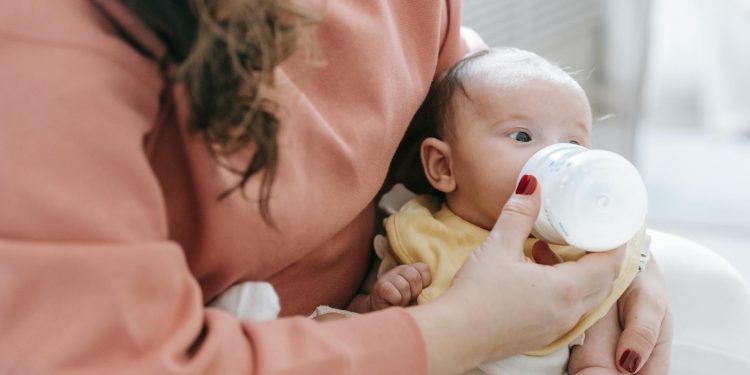Bringing a newborn into the world comes with a myriad of decisions, and one of the most crucial is selecting safe baby bottles. With an array of materials available, understanding which ones are safe for your little one is paramount. In this guide, we’ll delve into the significance of safe baby bottle materials, highlight materials to avoid, and provide insights into the safest options.
Table of Contents
The Importance of Safe Baby Bottle Materials
Choosing the right baby bottle material plays a significant role in their health and safety. Babies, especially newborns, have developing immune and digestive systems that can be sensitive to certain materials. Exposure to harmful substances leaching from bottles can lead to various health issues, including allergic reactions, hormone disruption, and even long-term developmental problems.
Furthermore, babies spend a significant amount of time feeding, especially during their early months. This prolonged contact with the bottle increases the risk of exposure to any harmful substances present in its material. Therefore, opting for safe baby bottle materials is essential to minimise potential health risks to your precious little one.
Materials to Avoid When Choosing Baby Bottles
When shopping for baby bottles, it’s essential to steer clear of materials known to pose potential risks to your infant’s health. Here are some materials commonly found in baby bottles that you should avoid:
- BPA (Bisphenol A): BPA is a synthetic compound used in the production of polycarbonate plastics, which are commonly used in baby bottles. Research has shown that BPA can mimic estrogen in the body, potentially disrupting hormonal balance and leading to adverse health effects, particularly in infants and young children. For this reason, it is important to opt for BPA-free baby bottles.
- Phthalates: Phthalates are chemicals added to plastics to increase their flexibility and durability. Like BPA, they can leach out of plastics and have been associated with adverse health effects, including reproductive abnormalities, asthma, and developmental delays. Avoid bottles made with materials containing phthalates.
- PVC (Polyvinyl Chloride): PVC is a type of plastic used in some baby bottles and bottle nipples. It can contain phthalates and other harmful chemicals that may leach into milk or formula, posing health risks to infants.
- Polycarbonate: This type of plastic contains BPA and is best avoided due to its potential to leach harmful chemicals, especially when exposed to heat or acidic liquids.
- Lead: Lead is a toxic metal that can leach into liquids stored in certain types of bottles, posing a severe health risk, especially to infants and young children. It is crucial to choose bottles that are certified lead-free to prevent exposure.
Safe Materials for Baby Bottles
Fortunately, there are several safe alternatives to the aforementioned materials. Here are some options to consider:
- Glass: Glass baby bottles are a trusted choice due to their durability, easy cleaning, and inert nature, ensuring they don’t leach harmful chemicals. They’re resilient against drops, can be safely washed in hot water or sterilised, and are compatible with hot liquids and dishwashers, making them a convenient and safe option for feeding infants.
- PPSU (Polyphenylsulfone): PPSU is a type of medical-grade plastic that is free from harmful chemicals such as BPA, BPS (Bisphenol S), and phthalates. It is known for its excellent heat resistance, making it suitable for sterilisation and repeated use. PPSU bottles are highly durable and shatterproof, reducing the risk of breakage and ensuring long-lasting performance. Additionally, PPSU is lightweight and transparent, allowing parents to easily monitor the contents of the bottle during feeding.
- Stainless Steel: Stainless steel bottles are another excellent choice for parents seeking safe alternatives. Renowned for their durability, they withstand the rigors of daily use without succumbing to damage. Being non-toxic and devoid of harmful chemicals, they ensure the purity of the contents without any risk of contamination. Moreover, their lightweight design makes them easy to handle, while their resistance to breakage provides added peace of mind, particularly for parents concerned about accidental drops or impacts.
- Silicone: Silicone baby bottles and nipples have gained popularity thanks to their safety features and adaptability. Silicone, being free from BPA, phthalates, and other harmful chemicals commonly found in plastics, ensures a worry-free feeding experience for parents concerned about their baby’s health. Its soft and flexible nature not only mimics the feel of natural breastfeeding but also makes it easier for babies to latch onto the nipple comfortably. Additionally, silicone is easy to clean, heat-resistant, and durable, making it a practical choice for busy parents seeking convenience without compromising safety.
- Borosilicate Glass: Borosilicate glass stands out for its remarkable ability to withstand sudden changes in temperature, known as thermal shock resistance. This characteristic makes it an ideal material for baby bottles, as it ensures safety when used with hot liquids without the risk of cracking or breaking. Borosilicate glass baby bottles combine the advantages of traditional glass bottles, such as inertness and ease of cleaning, with enhanced durability, providing parents with a reliable and long-lasting option for feeding their infants. This durability ensures peace of mind, as parents can trust that the bottle will remain intact even under the stress of daily use and cleaning.
As a final point, choosing safe baby bottle materials is essential for protecting your infant’s health and ensuring a worry-free feeding experience. Opt for BPA-free baby bottles such as PPSU, glass, stainless steel, or silicone bottles, prioritising materials that are free from harmful chemicals and contaminants. By making informed decisions and selecting high-quality bottles from reputable brands, you can provide your baby with the safest and most nourishing start in life.


 Home
Home










